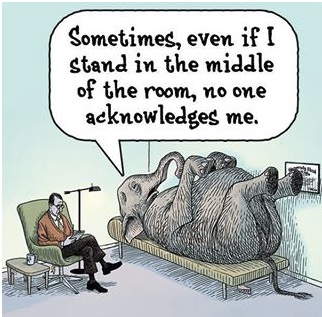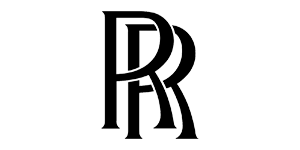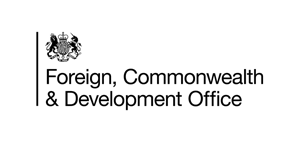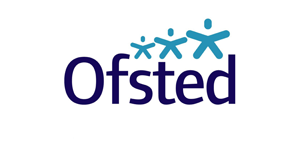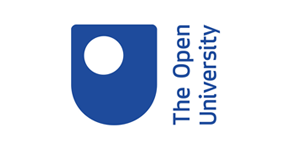The content of the coaching session – the art of elephant spotting
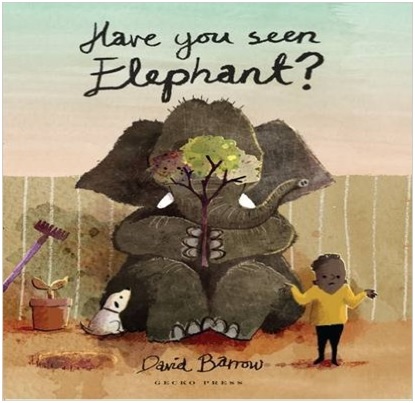
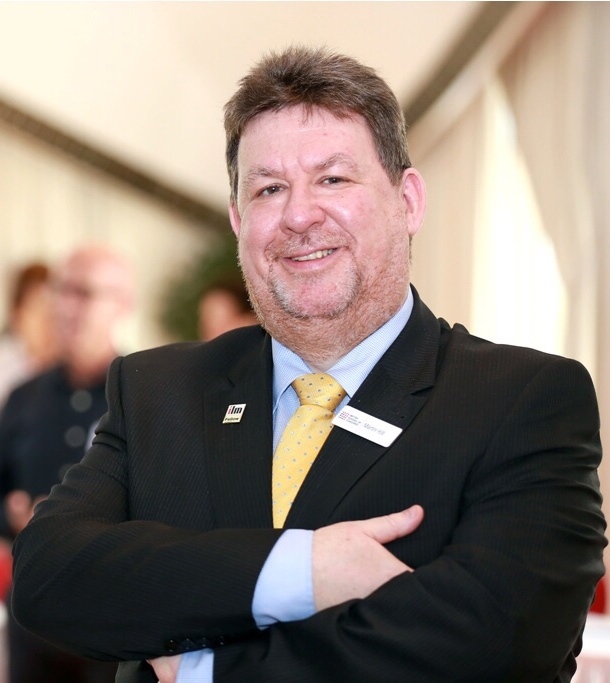
My previous blogs explored the topics of “Beginning A Coaching Relationship” and “Endings In A Coaching Relationship”. In this blog I will be exploring the content of the coaching session and, in particular, how the coach needs to ensure that the true topic/issue has been issued – the art of spotting the elephant in the room.
Sounds easy doesn’t it? A lot of the coaching models that you will be familiar with also give that impression – for example GROW – the first item on the agenda is to identify and agree the goal. Unfortunately, the first declared goal may not be the real goal – in other words the elephant has not yet been spotted. This may be for a variety of reasons – the coachee may feel nervous; feel a sense of shame or a fear of failure – it may even be the case that the coachee is unsure or uncertain.
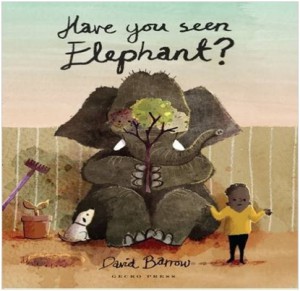
Here are some of my tools and tips that I have gleaned from my own coaching and supervisory practice and which help ensure that the elephant is spotted and appropriately dealt with:
• Preparations – the pre-session contact and information that you forward to the coachee can play a critical role in scene setting, managing expectations and providing the foundations for building trust and rapport. How do you “contract”? Including the coachee in the process and exploring their preferences/ expectations pays dividends in this regard – for example establishing their learning style preference (which enables the coach to plan for that) or establishing their understanding of, and tolerance for, challenge.
• Confidentiality – you know that you have established trust and rapport when the coachee feels confident to disclose personal, often their innermost, thoughts and feelings. The greater the attention you pay to explaining confidentiality, and agreeing the boundaries thereof together, the more likely it is that the elephant will come out into the open. Remember though that elephants do not like shocks or surprises – beware of promising “total confidentiality” as there are things that may arise that require disclosure and if you have not fully explained this or checked for mutual understanding – the elephant may well stampede and retreat into the distance.
• Patience – relax and be prepared to play the long game. Each coachee is unique and will have their own bespoke coaching experience. Bear in mind as well the nature of the coaching engagement as this may be a contributory factor in making the coachee feel safe and relaxed – for example internal coaches may notice that it takes longer to establish total trust and rapport with internal coachees, compared to external coachees.
• Check-In To Check-Out – even if the goal/topic has been identified and the session is focused on this, take the opportunity from time to time throughout the session to “check in” with the coachee and “check out” that this remains the most pressing or relevant goal or topic that the coachee needs to discuss.
• Questioning – Use of clear and focused questioning can help unearth the true issues. In “Enabling Genius” (2016), LID Publishing Ltd Myles Downey outlines that one of “the means of managing one’s thinking …is called the ‘floodlight and spotlight’. Floodlight comes first. Floodlighting shines light on the whole territory and into every nook and cranny. It includes what one notices, what one thinks about, what one intuits, imagines, feels and desires. Floodlight is followed by spotlight and the best question to focus the spotlight is: what stands out? Or what is most interesting? Cliff Kimber…asks this question frequently: ‘What do you need to think clearly about?’” Think of this in relation to your coaching practice – does your questioning generate floodlight and spotlight thinking?
• Use the AWE question – “The Coaching Habit” – Michael Bungay Stanier (2016) Box of Crayons Press uses this tool – the AWE question is (drum roll please)… “And What Else?” This can even be used at the goal/topic discussion stage – do not just accept the first declared goal, follow it up with AWE!
• Intuition – as your confidence as a coach grows, you will notice that you are becoming more adept at sensing or feeling (a “gut reaction”) the non-declared topics/issues. This intuition is something to pay attention to, but always needs to be carefully managed. Always seek permission to check out if the intuitive sense is accurate, and/or is something that the coachee is content to explore.
• Observation – the elephant in the room may be spotted by your observations – not just visual but also active listening. For example you may notice discordance in body language or expressed emotions by the coachee when they are talking. Another concept to be aware of comes from Hawkins & Shohet’s Seven Eyed Supervision model – “parallel process”. This could include the situation where the coaching session with the coachee mirrors how the coachee acts/behaves normally –sometimes contradicting what they are telling you in the session. It may be useful to explore this with the client by asking them to describe how they approach a task etc. The coach would then highlight what they have observed and the discordance. For example one coachee was describing her frustration with her second in command and spent some time explaining what the coachee was doing to address that and expressing confusion and frustration at the fact that it was not working. The session was interrupted by a knock on the door and I had a ring side seat and was able to hear the interaction between the two. When the session resumed, I played back what the coachee had initially described about her own behaviours and actions and contrasted that with the interaction I had just overheard which evidenced the complete opposite! A powerful tool which worked wonders.
• Use of knowledge – as the coach you may come into possession of knowledge or information that is unknown to the coachee. This is where Johari’s Window can be a really powerful tool to use and help the coachee explore their own “blind spot” and the “unknown” arena as well.
• Materials- Have you got everything that you need – pen, paper? Sometimes using a different learning style or using creativity in the session can expose the elephant. For example a coachee struggled to talk about an emotional issue; until I suggested that we tried a visual representation of the subject – hey presto! Make sure you keep your “coaching kitbag” stocked and also make sure that you keep it current and topical to suit your practice.
• Challenge – be ready to challenge the elephant in the room – especially if it has not been “noticed”, or acknowledged by the coachee.
• How do you eat an elephant?
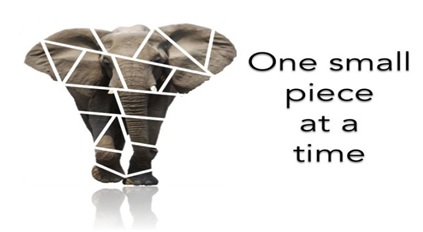
Make sure you deal with the elephant by setting small “baby” steps for action – make sure that they are SMART (specific, measurable, achievable, realistic and time bound) and get the coachee to visualise and describe what the successful completion of the action will look and feel like , what will others notice; what will people be saying etc.
• Suspend Judgement – maintain neutrality no matter what is disclosed. Simply acknowledge, accept and explore.
I hope that this has provided a catalyst for your own thoughts and reflections and I would be interested to hear from you with your own comments or observations (email Martin@britishschoolofcoaching.com).
